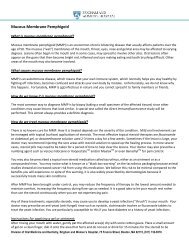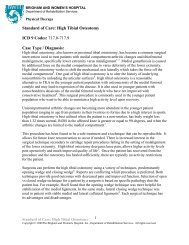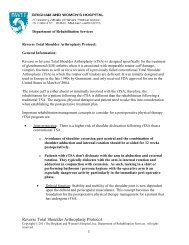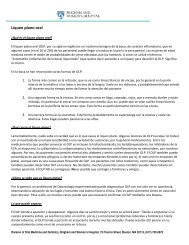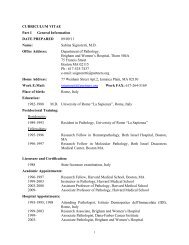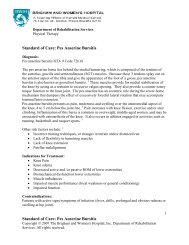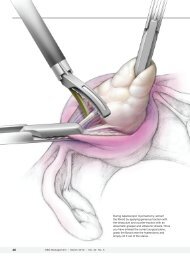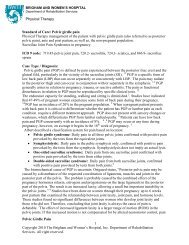Paralytic Strabismus: Third, Fourth, and Sixth Nerve Palsy
Paralytic Strabismus: Third, Fourth, and Sixth Nerve Palsy
Paralytic Strabismus: Third, Fourth, and Sixth Nerve Palsy
You also want an ePaper? Increase the reach of your titles
YUMPU automatically turns print PDFs into web optimized ePapers that Google loves.
<strong>Paralytic</strong> <strong>Strabismus</strong> 821<br />
Fig. 16. A 5-year-old girl with right Duane syndrome, type 1. (A) Normal alignment in<br />
primary position. (B) Severe right abduction deficit. (C) Full ductions on left gaze, with<br />
retraction of the right globe <strong>and</strong> narrowing of the palpebral fissure.<br />
abduction deficit of the ipisilateral eye as well as an adduction deficit of the contralateral<br />
eye; together, this is a conjugate gaze palsy. In contrast, a lesion affecting the<br />
sixth nerve fascicle or nerve will produce an ipsilateral abduction deficit but spare<br />
adduction of the contralateral eye. Because of the proximity between the seventh<br />
nerve fascicle <strong>and</strong> the sixth nerve nucleus (within the facial colliculus), a single lesion<br />
at that location will typically produce ipsilateral gaze palsy <strong>and</strong> upper <strong>and</strong> lower facial<br />
weakness. A lesion more ventral in the pons may affect the sixth nerve fascicle <strong>and</strong> the<br />
descending corticospinal tract, producing an ipsilateral abduction deficit with contralateral<br />
hemiparesis or in isolation. These pontine lesions are commonly ischemic, due<br />
to occlusion of a paramedian penetrating branch from the basilar artery, but the differential<br />
diagnosis also includes a vascular malformation, demyelination, or neoplasm. 61<br />
At the base of the skull, as the sixth nerve rises along the clivus over the petrous ligament<br />
into Dorello’s canal, it is vulnerable to injury from downward mass effect due to<br />
Fig. 17. A 4-year-old girl with bilateral gaze paresis <strong>and</strong> facial diplegia. (A) Upper <strong>and</strong> lower<br />
facial weakness, worse on the left than the right. (B) Partial right gaze palsy. (C) Marked left<br />
gaze palsy.




